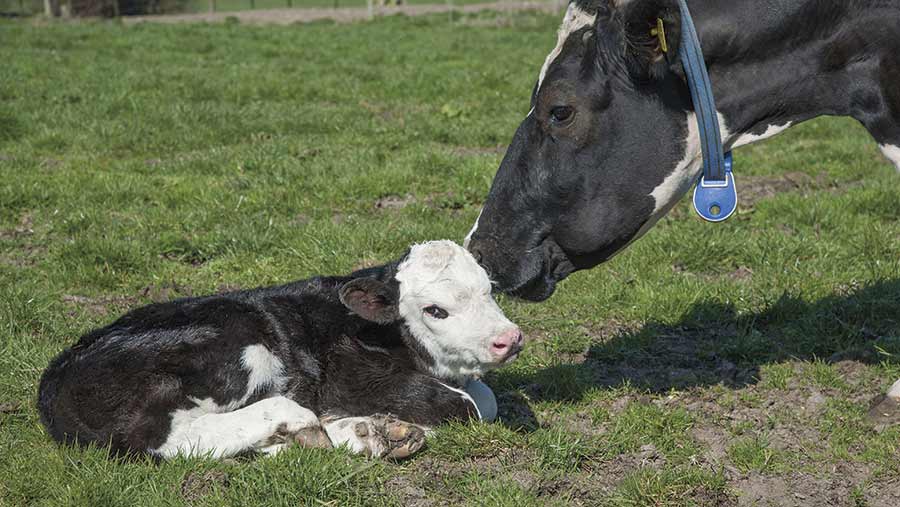Milk buyer puts plans in place to tackle Johne’s disease
 ©FLPA/John Eveson/Rex/Shutterstock
©FLPA/John Eveson/Rex/Shutterstock Somerset farmhouse cheesemaker Barber’s is encouraging its 120-strong producer pool to integrate a risk-assessment component into their herds’ Johne’s control programme.
It is hoped this latest initiative, developed by NML (part of the NMR group) and MyHealthyHerd, will gain traction among producers in the quest to have Johne’s control programmes firmly in place in its supply chain.
Barber’s director Anthony Barber, who is one of the first milk buyers to promote this latest initiative, would like to see its suppliers work with their vets in completing an annual farm risk assessment that can be integrated into the unit’s Johne’s control plan.
See also: Journey to eradicating Johne’s disease
“We ran an intensive series of meetings to explain where the risk assessment fits into the farm’s Johne’s control plans,” says Mr Barber.
“These saw 95% of our supplier herds represented, plus 30 vet practices, across four days. I hope this is an indication of their commitment to Johne’s disease control and we are encouraging producers to complete their first risk assessment in the next few months.”
Mr Barber is keen to see health control plans in force – and particularly an ongoing Johne’s surveillance plan – that will benefit cow health and herd sustainability, but that will also reinforce the quality of their product to the end-user.
“We sell premium cheddar cheese and whey products all around the world and we want a quality endorsement right through the supply chain,” he adds.
Johne’s risk assessment
The new Johne’s risk assessment module evaluates, through a questionnaire, the risks of Johne’s entering the herd and of the disease spreading within the herd.
Producers and their vets are encouraged to provide information right along the possible infection route, from cattle entering the herd to calving pen management and colostrum protocols.
These results are used to generate a report through the MyHealthyHerd web programme which shows up the “red” areas that are high risk points for Johne’s entry and/or spread in the herd.
“It gives vets and producers the accurate information they need to target to improve management,” says NML vet Karen Bond. “And it goes one step further, too, in showing the likely outcome of the current management plan by predicting the herd’s future Johne’s disease prevalence.
“If current management is not robust, then this ‘prevalence’ chart will predict an increase over time,” she adds. “On farms with excellent Johne’s control protocols in place, it will show a decrease in the prevalence of the disease.”
Results
NML has carried out more than 250 risk assessments on behalf of producers. Results show that buying behaviour presents the biggest threat of the disease entering herds, with producers bringing in stock from unknown sources.
“Results so far show that milk and colostrum management is well controlled on farms, but the area of cow-to-calf infection through the use of multiple calving yards and keeping ‘red’ – or infected – cows in the herd for a long time are higher-risk areas,” adds Mrs Bond.
The risk assessment report fulfils the remit of the National Johne’s Management Plan – ‘know your risks, know your status, and commit to one of the six strategies’ – and as such it is gaining interest from more milk buyers.
The Organic Milk Suppliers Cooperative is completing risk assessments on its 250 suppliers, as is Glanbia, and Waitrose suppliers have now all completed an assessment.
“Understanding and managing the risks of Johne’s entering a herd – as well as the risks of it spreading once established – are crucial for all producers,” says Mrs Bond. “And that’s why this new risk assessment tool is an important component in producers’ armoury against this insidious disease.”
What is Johne’s
Johne’s disease is a chronic, debilitating and irreversible disease of ruminants caused by infection with Mycobacterium avium subspecies paratuberculosis (MAP).
How are animals infected?
Animals are usually infected as calves, with about 80% of infections occurring within the first month of life.
Infection is mainly, but not only, caused by ingesting faeces often from contaminated bedding, udders, teats or buckets or from colostrum or milk. Much less commonly, the disease can be acquired in the womb or later in life.
Infected animals will test negative for a variable period of time – usually several years – before the disease progresses and they become infectious to others, at which time they will usually test positive under one or more of the available diagnostic tests.
Johne’s infections are almost always introduced to a herd by purchasing infected replacement breeding stock – although there are other risks of introducing the disease, including importing slurry from other farms and swapping colostrum between herds.
What are the symptoms?
Johne’s disease can adversely affect the physical and economic performance of a dairy herd. Cows testing positive for Johne’s are twice as likely to have a cell count > 200,000 cells/ml and are twice as likely to have milk yields 25% below their adjusted herd average.
(Information supplied by National Action Group on Johne’s)
